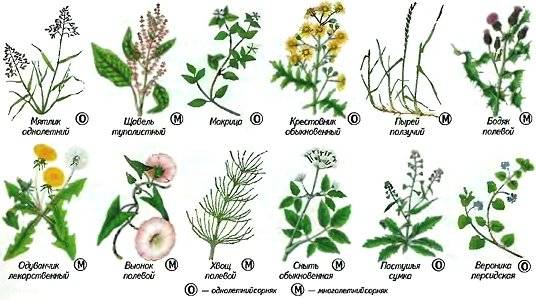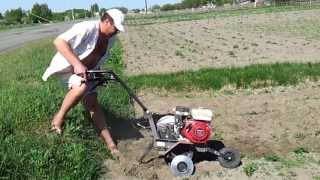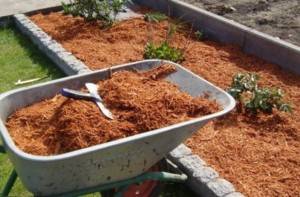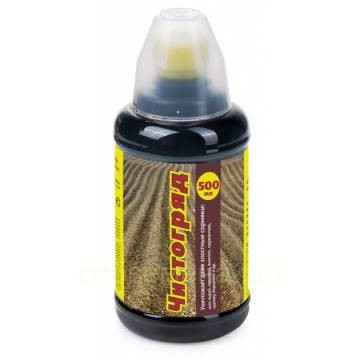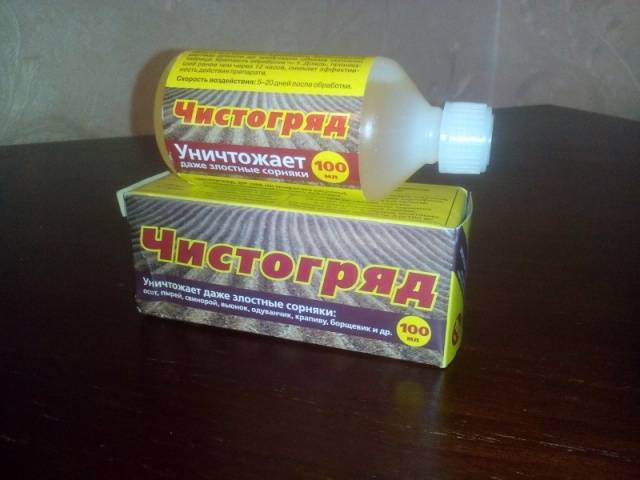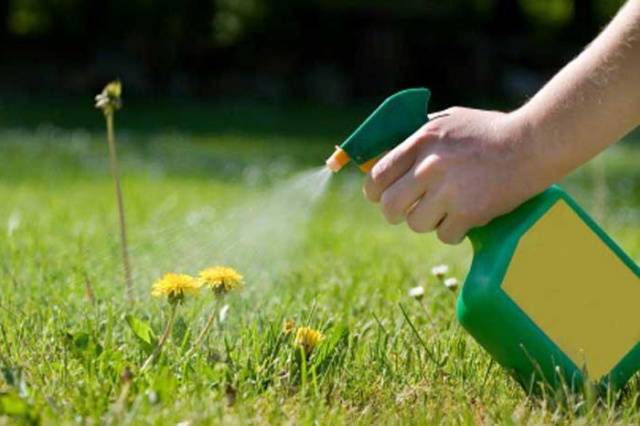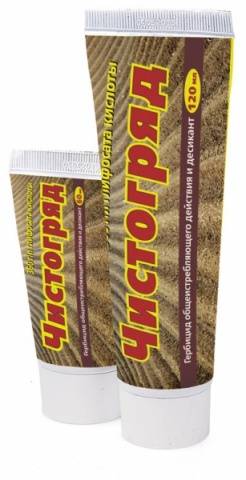Content
Probably, there is no other such laborious operation in the garden and in the garden, as weeding. Standing for many hours in a bent position or on your knees will tire any gardener. But what can you do? Without deletion weeds you won't grow vegetables, berries or fruits. But it was like that before. Progress in business weed control greatly facilitated the work of the gardener. There are many drugs that can destroy weeds with minimal involvement of the farmer. Is it necessary to fight them? Maybe there is nothing wrong with the fact that they coexist on the same bed with cultivated plants? Let's take a closer look at this.
What is weed? The word litter, from which the name of weeds comes from, has a synonym - garbage, that is, what is not needed and is usually thrown away. Therefore, weeds are plants that have every right to grow anywhere, but not in the beds. What is their harm?
Weed damage
- Weeds take food away from garden crops.
- Weeds strip them of moisture.
- Shading cultivated plants, weeds inhibit the process of photosynthesis in them, thereby retarding the development of garden plants and reducing their yield.
- With a large reproduction, weeds displace garden crops from the beds.
Hardened to fight for water, food and sunlight, weeds have great potential for life. Cultivated plants, pampered by the care of a person, obviously lose to weeds in their ability to adapt to any circumstances. The business of the gardener is to create for them such conditions under which all the forces of the garden plants will be thrown into the formation of the crop, and not on the struggle for survival. Therefore, it is necessary to remove weeds from the beds. But here, too, there are subtleties. In order to successfully cope with weeds and save your time, you need to know the enemy by sight.
Characteristics of weeds
All weeds differ in the following characteristics:
- the duration of the growing season;
- breeding methods;
- dietary habits.
Weeds are annual, biennial and perennial. Each of these categories requires different techniques for weed eradication.
Control methods
There are different methods for controlling weeds.
- Hand weeding... Quite effective, but very time consuming method, which also has to be repeated many times during the season. Perennial weeds grow back after weeding. Weeds removed from the garden can improve fertility. Don't throw them anywhere. Build a compost bin with no bottom and holes in the sides for weeds. After a year, the resulting compost can be used to fertilize garden crops.
- Mechanical method... In addition to traditional hoes, flat cutters and weed removers appeared in the gardener's arsenal. For large areas, you can also use walk-behind tractors with various attachments.
- Mulching... With its help, conditions are created under which weeds cannot develop. There are a lot of mulching materials: hay, cut grass without seeds, sawdust, black cover material and a film of the same color, a layer of newspapers or cardboard. If fresh sawdust is used for mulching, be sure to moisten it with a solution of nitrogen fertilizer, such as urea. When sawdust decomposes, nitrogen can be absorbed from the soil, depleting it.
Folk remedies
Soda - a strong soda solution will help to cope with small grass, especially if it grows between the slabs of the paths where weeding is difficult.
Salt - if you sprinkle a small amount of salt next to the planted crops, the weeds will not only die, but also will not grow in this place for some time.
Vinegar 9% - effective method. They are sprayed with weeds.
A mixture of vinegar and salt with the addition of grated laundry or liquid soap, all in equal amounts, is great for dealing with weeds. The product needs to be sprayed.
Vinegar is also used in another mixture for weed control. Its composition: take 2 cups of water and 9% vinegar, add one sachet of citric acid, 2 teaspoons of liquid soap and 30 g of alcohol to them. The precautions are the same as in the previous recipe.
In order to prevent weed seeds from germinating, feed grains are used. Ground corn or oats are sprayed on the beds. Gluten, which is found in feed grains, inhibits the growth of weed seeds.
If you do this earlier, garden crops may simply not germinate.
Weed control will also help with diluted 1:10 rubbing alcohol. If you take one liter of alcohol and dilute it, this amount will be enough for about 2 acres of land. It is necessary to carry out processing a month before sowing or planting.
All products listed are suitable for spraying. To treat the weeds for sure, without harming garden crops, you can also use a small paint brush.
If for some reason all these methods of weed control are not suitable, you will have to resort to chemicals. The modern range of chemicals for dealing with unnecessary vegetation is quite large. They are called herbicides and are as follows in their action.
Characteristics of herbicides
- Selective herbicides. Their application is sometimes called chemical weeding... Such substances act selectively either on one type of plant, or only on some family of weeds, for example, on dicotyledonous weeds.
- Continuous herbicides... These herbicides destroy all types of vegetation completely. Such substances are used before the appearance of garden crops on the beds in the spring or after they are harvested in the fall. Most of these drugs are based on glyphosate.
Chistogryad - the latest generation herbicide
Recently, a new drug for weeds has been created - Chistograd, the reviews of which are encouraging. It is not only a continuous herbicide, but also a desiccant, that is, a substance that dehydrates plants.
Herbicide Chistogryad is available in tubes of 50 and 100 ml or in a bottle with a volume of 0.5 liters. The active ingredient of Chistogryad is the isopropylamine salt of glyphosate. The mechanism of action of this herbicide on weeds is not fully understood. Some studies suggest that Chistogryad disrupts the process of cellular metabolism in plants by inhibiting the enzymatic process by which aromatic amino acids are synthesized - an important element of cellular metabolism. Getting on weeds, Chistogryad is partially absorbed by them and, moving through the vessels, penetrates into the roots. The effect of the herbicide will be noticeable after 10 days, and the complete death of the weeds occurs after 3 weeks. The Chistogryad cannot be absorbed by the roots of plants.
There is evidence that glyphosate-based herbicides reduce plant resistance to disease. Once in the soil, they inhibit the development of nitrogen-fixing bacteria.
Application area
Chistogryad fights with everyone types of weeds, including the most malicious. It is designed to treat areas 2 weeks before sowing cultivated plants and lawn grasses... A pure garden can be used for weed control in vineyards and citrus plantings, provided the main crop is carefully protected. Chistogryad can also be used after harvest to remove perennial and wintering annual weeds.
How to apply
The instruction recommends diluting this herbicide with clean water in a ratio of 100 ml of the drug to 6 or 4 liters of water. A more concentrated Chistogryad solution is used where there are many harmful weeds, for example, wheatgrass. This amount of solution can be used to treat 200 and 130 square meters, respectively.
To dilute the herbicide, take plastic or enameled dishes, metal containers are not suitable. Dilute in stages, first, the entire amount of Chistogryad is thoroughly stirred in 1 liter of water, and then the rest of the water is added to the required volume.
The site is treated with a herbicide solution once. The drug is absorbed by the leaves of the weeds, so they cannot be mowed or weeded before processing. The absorption process lasts up to 6 hours.
If it does not have time to be absorbed into the leaves, it can be washed off by the rain, and the processing efficiency will decrease.
Health hazard
The main breakdown product of glyphosate is aminomethylphosphanic acid. The period for which glyphosate is degraded in half is from a week to 140 days. Glyphosate binds easily to the soil and is also easily released from it.
Excessive concentration of the drug poses a health hazard. The symptoms of Chistogryad poisoning are as follows.
- Pain and burning in the eyes, blurred vision.
- Burning and itching of the skin, rashes, blisters, eczema.
- Swelling of the face and joints.
- Cardiac arrhythmias, chest pain.
- Headache and increased pressure.
- Cough.
In case of accidental contact with Chistogryad on the skin or in the eyes, rinse them with plenty of water.
Weeds have no place in the garden. Use any means of dealing with them to provide optimal conditions for the development of garden crops.
